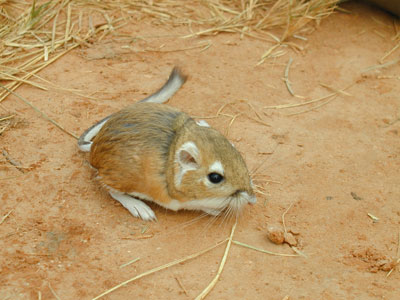|
back Home Life Along a
|
|
Ord's Kangaroo Rat
Dipodomys ordii|
© Nicholas J. Czaplewski, Sam Noble Oklahoma Museum of Natural History |
Ord’s kangaroo rat is widely distributed, occupying the short grass prairie of the Great Plains and living in a variety of habitats where there is fine sandy soil. In fact, this animal is one of the few able to make burrows in loose sand, making sandy banks and sandbars of prairie rivers good habitat. Including their long tail, Ord’s kangaroo rat is usually 24-36 cm long. With a superior sense of smell, excellent hearing, and marvelous night vision, kangaroo rats are active on cloudy nights. Bad weather keeps them in their burrows and moonlit nights expose them to predators, such as owls and coyotes. When escaping a predator, this species can jump up to 2 m in a single bound. If the rat cannot immediately flee, it can use their back legs to kick sand into the predator’s face. Being nocturnal, you may have a difficult time observing kangaroo rats, but can observe their tracks in the sand. When traveling, they hop on their hind legs leaving tracks of only two feet. They move on all four feet and drag their tail when feeding. Ord’s kangaroo rats eat mostly seeds which are collected in fur-lined cheek pouches and taken back to their burrows for storage. During the summer these rats may also eat insects, such as grasshoppers and moths. Kangaroo rats rarely drink water, instead they use water which their body produces when breaking down food. |
|
back to species list |
PDF of all species profiles
|

